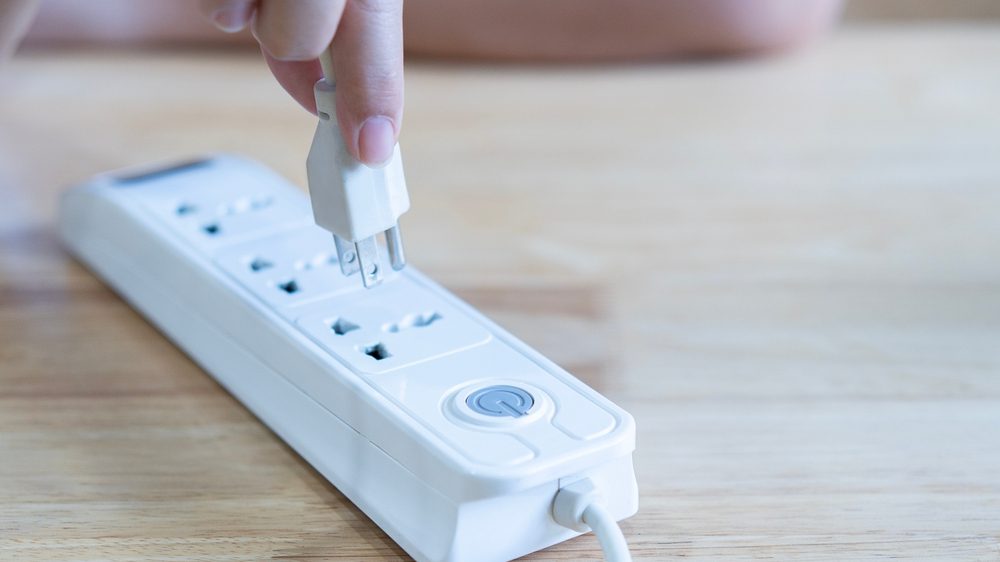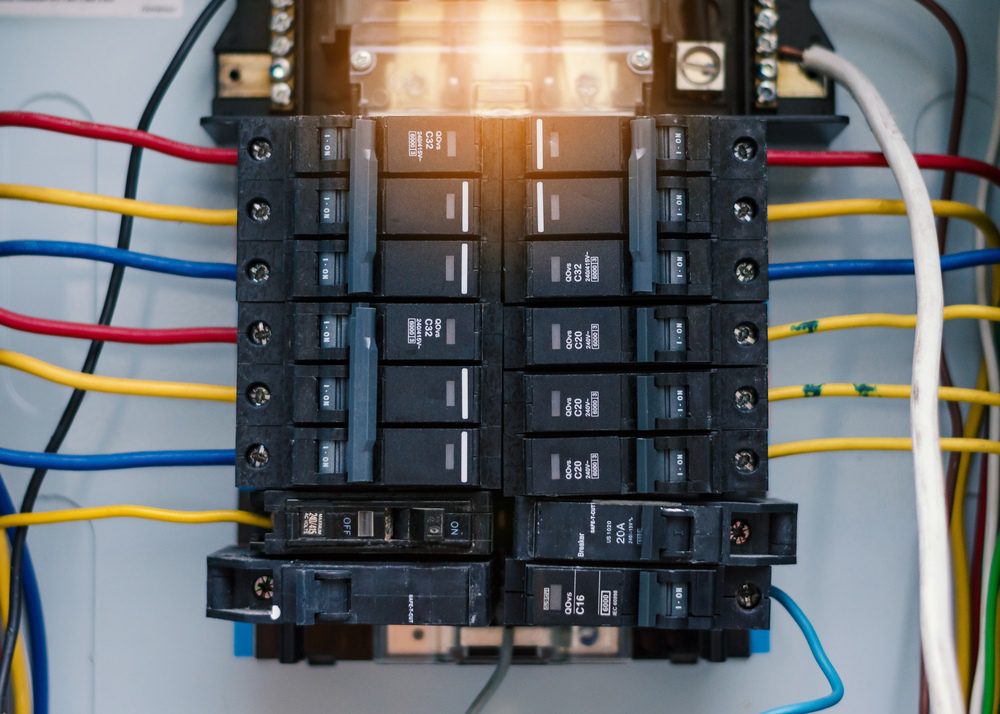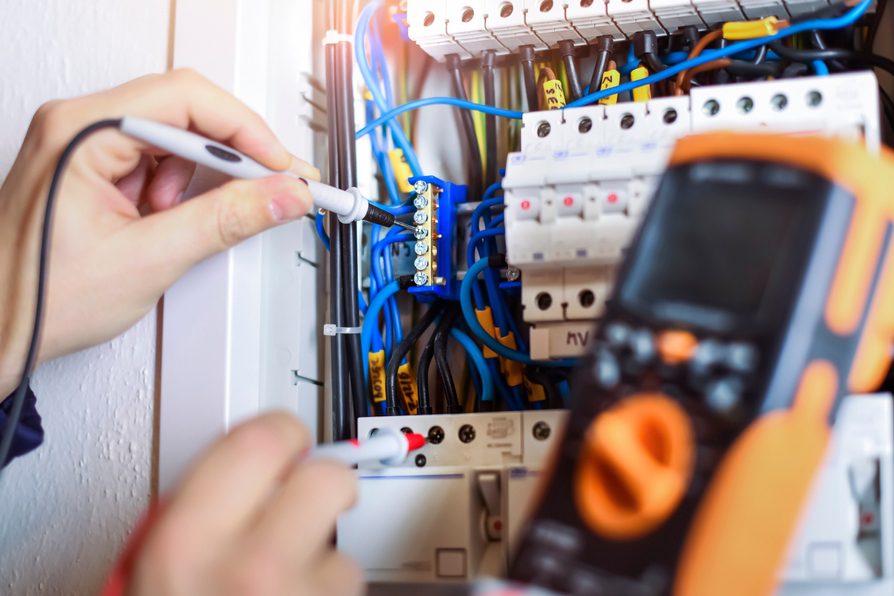
Do you live in an area with frequent severe weather that requires you to decide between a power strip vs. a surge protector? We have created an outline to help you learn about the differences between using a power strip and a surge protector. We have also listed the advantages of each type of system.
Table of Contents
What Are the Differences Between Surge Protectors and Power Strips?
When you need to decide between whole-home surge protector installation and a power strip, it helps to understand the difference between the devices.
The primary difference lies in their function: a power strip adds extra outlets while a surge protector defends against voltage spikes. These electrical surges can damage your electronic devices beyond repair.
The easiest way to determine whether you have a surge protector or power strip is by looking at the joules rating, which power strips don’t have. Joules provide an energy measurement, and the rating determines how much of a power spike your device can handle before it overloads.
Consider this rating as a finite number, as the protection doesn’t recharge after it defends against a power spike. If your surge protector has a rating of 20,000 and has prevented a spike of 10,000 joules, it has reached half its capacity.
What causes a power surge? Here are the most common causes of these devastating electrical events:
- While a blackout itself doesn’t cause a power surge, the sudden jolt in electricity once the utility company restores power can overwhelm some electrical systems and appliances.
- Downed power lines can cause chaotic swings in power before they completely lose electricity, and nearby homes can experience electrical spikes.
- Lightning strikes don’t have to hit your home to cause a problem. If lightning strikes a nearby power supply, it can send a surge through the power lines and into your home, frying your entire electrical system.
- According to the National Electrical Manufacturers Association, about 60% to 80% of surges occur internally in the home, most often from faulty wiring. If you have an older electrical system, it leaves you vulnerable to power surges and fires.
- If you have an older, large appliance nearing the end of its life, the appliance may frequently cycle on and off. Air conditioners, furnaces, and heat pumps are most likely to cycle frequently. The spike in power from repeatedly turning on and off can cause a power surge.
Read More: What Causes an Electrical Short Circuit? Tips and Response Methods
Power Strip Advantages
When considering whether you want a power strip vs. a surge protector, determine how many devices you need to plug into a single location. The primary advantage of a power strip is that it allows you to plug multiple devices into a single outlet.
Some power strips contain built-in surge protectors, but it’s not always a standard feature. This can leave your connected electrical devices vulnerable to power surges.
Surge Protector Advantages
What is the advantage of a surge protector over a power strip? It helps protect your valuable appliances and devices against an electrical surge. Like a power strip, you can often plug multiple devices into a single surge protector, and the basic versions cost only slightly more than a power strip.
However, the more you spend on a surge protector, the higher its joule rating and the longer it should protect your devices before you need to replace it. Surge protectors make the best option for homes that use multiple expensive devices at once, such as TVs, computers, or game consoles.

What Is a Whole-Home Surge Protector?
A whole-home surge protector connects directly to the electrical panel in your house rather than protecting a specific outlet. When it detects a power surge that exceeds its clamping voltage (the amount of power allowed before the surge protector diverts it), it reroutes the excess power into the ground using a wire.
Like other surge protectors, if your whole-home surge protector experiences a large power surge, you should replace it immediately so it can continue to protect your electrical system. Generally, a whole-home surge protector lasts between two and five years. Although the lifespan of a surge protector will vary based on a variety of factors.
What Are the Advantages of a Whole-Home Surge Protector?
If you are comparing the unique applications for power strips vs surge protectors, we have created a list of the advantages of choosing a whole-home surge protector.
Protection for Your Appliances
Let’s examine the biggest advantage of a whole-home surge protector. It can prolong the life of your appliances by defending them against power surges. The appliances that most often benefit from surge protection include:
- Ovens and Refrigerators
- Computers, tablets, and mobile devices
- Televisions and gaming equipment
- HVAC systems
- Washers and dryers
- Lighting fixtures
Read More: Top Reasons Your Circuit Breaker is Tripping When You Use Your Oven
Prevent Damage to Your Electrical System
One major benefit to a whole-home surge protector is that it can defend your entire electrical system rather than just your devices. An electrical surge can damage your wiring, outlets, and circuits, and replacing a defective electrical system is expensive.
Peace of Mind
You can’t put a monetary value on the peace of mind that comes with whole-home surge protection. Consider it an extra layer of insurance and an investment against an even greater expense. If you have to replace your home’s wiring and any appliance that can’t function after a power surge, you will pay tens of thousands of dollars.
By contrast, installation for a whole-home surge protector will usually cost substantially less. If you consider the peace of mind you will enjoy, the value is nearly priceless.

Whole-House Surge Protector Installation Services
Have you decided whether a power strip vs. a surge protector is best for you? Our team of professionals provide a surge protector warranty on all installations for extra peace of mind and security for your home.
Our staff of certified electricians in Lakewood, NJ offer reliable whole-home surge protector installation services for local homeowners. Whether you require 24-hour emergency electrical services or need an annual electrical inspection, we have got you covered.
If you’re ready to protect your home against devastating power surges, contact us online or by phone at (732) 638-4317. From electrical panel replacement to whole-home surge protection, our technicians perform every job with expert knowledge and professionalism.


